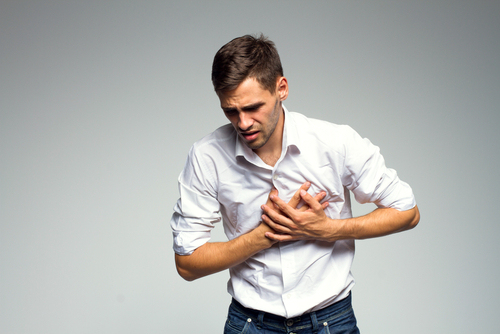Coronary artery disease (CAD) is the most common type of heart disease. CAD develops when the arteries that supply blood to heart muscle become hardened and narrowed. This is due to the buildup of cholesterol and other material, called plaque, on their inner walls, a process called atherosclerosis. As the plaque grows, it blocks the blood flow through the arteries. As a result, the heart muscle can’t get the blood or oxygen it needs. This can lead to chest pain (angina) or a heart attack. Most heart attacks happen when a blood clot suddenly cuts off the hearts’ blood supply, causing permanent heart damage.
Over time, CAD can also weaken the heart muscle and contribute to heart failure and arrhythmias (abnormal heartbeats).


